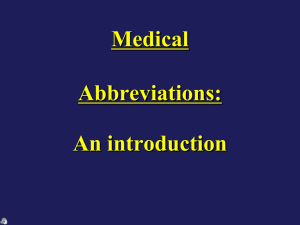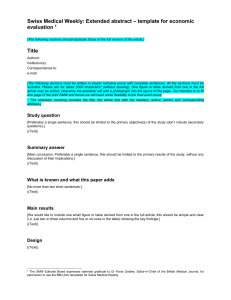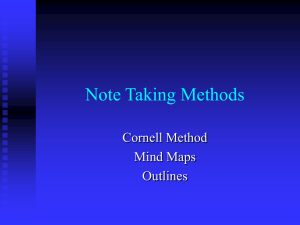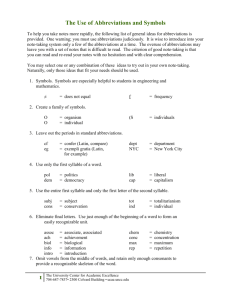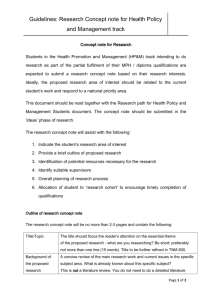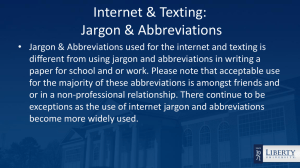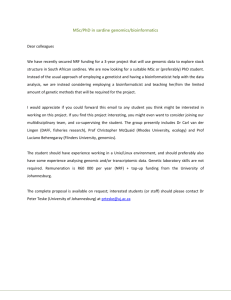Principles of writing Write concisely to save the time of referees and
advertisement
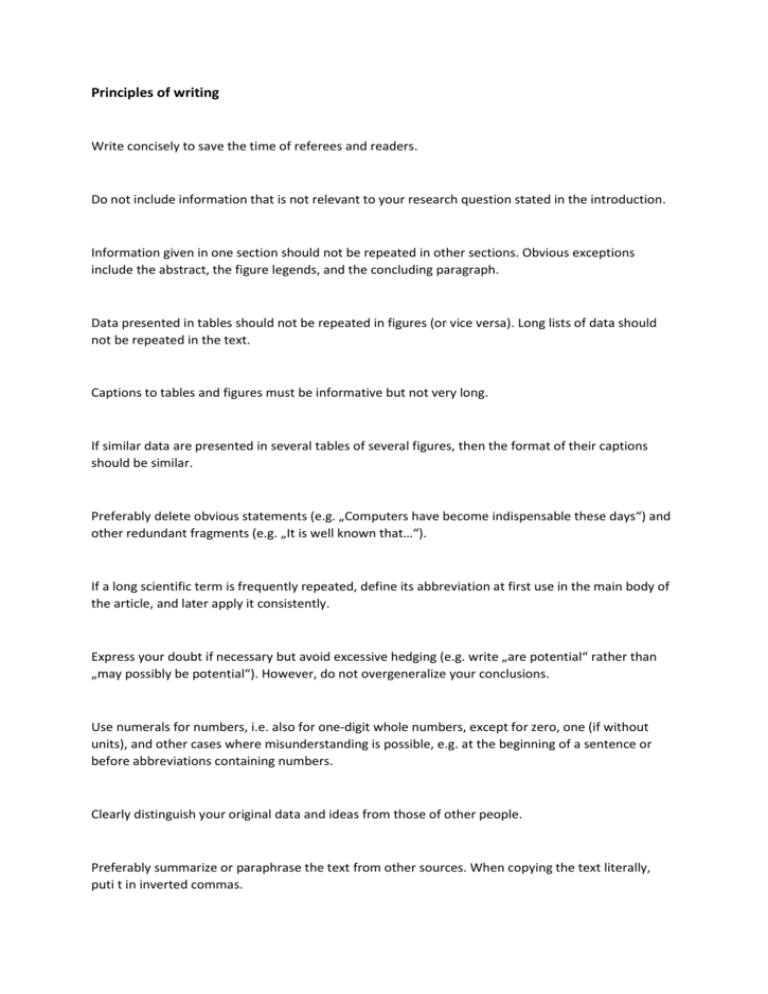
Principles of writing Write concisely to save the time of referees and readers. Do not include information that is not relevant to your research question stated in the introduction. Information given in one section should not be repeated in other sections. Obvious exceptions include the abstract, the figure legends, and the concluding paragraph. Data presented in tables should not be repeated in figures (or vice versa). Long lists of data should not be repeated in the text. Captions to tables and figures must be informative but not very long. If similar data are presented in several tables of several figures, then the format of their captions should be similar. Preferably delete obvious statements (e.g. „Computers have become indispensable these days“) and other redundant fragments (e.g. „It is well known that…“). If a long scientific term is frequently repeated, define its abbreviation at first use in the main body of the article, and later apply it consistently. Express your doubt if necessary but avoid excessive hedging (e.g. write „are potential“ rather than „may possibly be potential“). However, do not overgeneralize your conclusions. Use numerals for numbers, i.e. also for one-digit whole numbers, except for zero, one (if without units), and other cases where misunderstanding is possible, e.g. at the beginning of a sentence or before abbreviations containing numbers. Clearly distinguish your original data and ideas from those of other people. Preferably summarize or paraphrase the text from other sources. When copying the text literally, puti t in inverted commas. Use proper scientific terms, preferably on the basis of texts written by native speakers. Avoid unclear and ambiguous statements, which require the reader to guess what you meant. The text should be cohesive, logically organized, and thus easy to follow. Each paragraph preferably should start with a topic sentence, and the next sentences fully develop the topic. Make figures and tables easily understandable without reference to the main body of the article. Omit data that are not informative (e.g. delete a column if it contains the same values in all rows – you can write about it in a footnote instead). In tables and figures, apply abbreviations only if necessary for consistency or if there is not enough room for whole words. In captions or footnotes, define all abbreviations and symbols that are not obvious. In long lists (of abbreviations, etc), preferably separate individual items by semicolons. To denote centuries, months, etc., do not use capital Roman numerals, as they are rare in English. Because of differences between British and American date notation, preferably denote months as whole words or their first 3 letters. Remember to use decimal point. In numbers exceeding 4 digits to the right or left of the decimal point, use thin spaces (not commas) between groups of 3 digits in either direction from the decimal point. When reporting percentages, make clear what you regard as 100%. When writing about correlations, relationships, etc., make clear which values you are comparing with which. Sentences generally should not be very long. Sentence structure should be relatively simple, with the subject located close to its verb. Do not overuse passive constructions. Use parallel constructions, as they facilitate understanding. Wherever scientific terms are not necessary, preferably use commonly known words. Avoid colloquial and idiomatic expressions, as well as phrasal words (e.g. find out, pay off). Define abbreviations when they first apear in the main body of the article (if they may be unclear to readers). Do not use too many different abbreviations. Avoid abbreviations in the abstract. In general, use the past tense when describing how you performed your study and what you found or what other researchers did. Preferably use the present tense in general statements and interpretations (e,.g. statistical significance, conclusions) or when writing about the content of your article, especially tables and figures. Do not write about yourself „the author(s)“, as this is ambiguous. Instead, use expressions like „in this study“ (or „we“, as the case may be, but not „I“). Note that you should write „this study“ only if you mean your results. If you mean a publication mentioned in a previous sentence, write „that study“. If you mean authors of a cited publication, write „those authors“. Read the text aloud to check punctuation. All intonation breaks necessary for proper understanding should be denoted with commas or other punctuation marks. Be consistent in spelling. Follow either British or American rules for spelling or date notation. Check if all verbs agree in number with their subjects and if the references for all pronouns are clear. Note that some nouns have irregular plurals. Remember that in scientific texts the word „which“ should be used in non-defining clauses, while „that“ in defining clauses i.e. meaning „only those that“).
